Kayaking is considered an excellent full-body workout that can burn up to 400 calories per hour. As a low-impact exercise, kayaking works multiple muscle groups including the arms, shoulders, back, core, and legs without putting strain on the joints.
In just one hour of paddling, you can get a rigorous upper and lower body workout that improves cardio endurance, boosts strength, and increases flexibility. Dive into our article to uncover the comprehensive health benefits of this engaging water sport.
Exploring Different Kayak Workouts
Let’s explore some options to get your heart pumping and muscles screaming (in a good way!):
Flatwater Frenzy:
- Sprint Sensations: Paddle fast for 1 minute, and rest for 20 seconds. Repeat 10-15 times for a cardio boost.
- Endurance Odyssey: Maintain a steady pace for 30-60 minutes. Alternate paddling forward and backward to engage different muscles, especially the core.
Whitewater Warrior:
- Rapid Rhapsody: Tackle rapids with torso twists and spins. A full-body workout improves balance and strength.
- Playboating Poise: Focus on wave surfing, balancing, and core strengthening.
Muscle Mania: No matter which workout you choose, kayaking engages a ton of muscles:
- Upper Body Bonanza: Chest, back, shoulders, biceps, and triceps all get a workout with every paddle stroke. Say goodbye to noodle arms, and hello to sculpted biceps!
- Core Crusader: Your core will be your best friend (or maybe your worst enemy) during kayaking. All that twisting and turning tones your abs, obliques, and even your lower back. Prepare for a rock-solid midsection!
- Leggy Legends: Don’t underestimate the power of your legs! They push with each stroke, adding power and balance. Plus, they help engage your core even more. Strong legs, happy core, happy you.
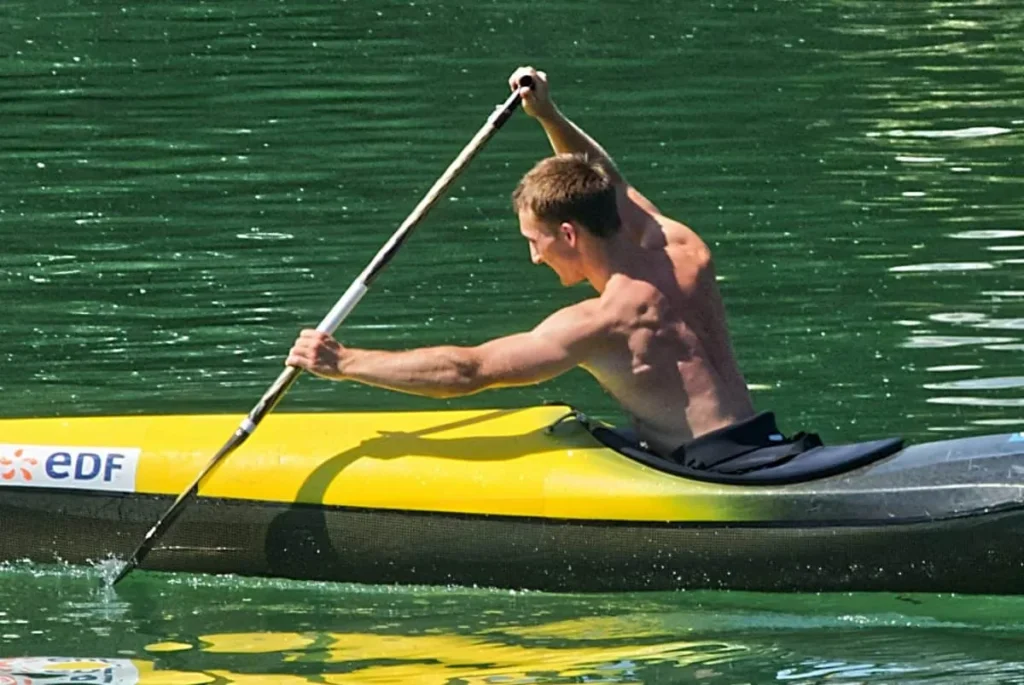
Bonus Tip: Listen to your body, take breaks, and stay hydrated.
Kayaking offers diverse workouts, engaging multiple muscle groups, and improving cardiovascular health and balance.
How to Structuring a Kayak Workout for Maximum Benefit?
Craft a balanced kayak workout for effectiveness and enjoyment. Here’s how:
Warm-Up: Preparing Your Muscles:
- Easy Paddling: Begin with 5-10 minutes of gentle paddling to loosen muscles.
- Dynamic Stretches: Perform arm circles and torso twists to prepare paddling muscles.
Main Workout: Challenging Your Strength:
- Varied Activities: Choose from flatwater sprints, whitewater rapids, or wave surfing. Each activity targets different muscles.
- Intensity Intervals: Mix high-effort paddling (1 minute) with rest periods (2 minutes) to maintain heart rate and muscle engagement.
- Body Awareness: Take breaks as needed and adjust intensity based on how you feel.
Cooldown: Recover and Relax:
- Slow Paddling: Dedicate 5 minutes to gentle cruising, helping muscles cool down.
- Static Stretches: Hold stretches for 30 seconds each for arms, shoulders, and core, aiding in muscle recovery.
Things To Consideration:
Can you kayak while pregnant: Kayaking during pregnancy can be a low-impact exercise, but consult your healthcare provider for personalized advice. Learn more about kayaking during pregnancy.
Pro Tips for Optimal Performance:
- Hydration: Drink water before, during, and after the workout. Hydration is crucial for muscle function.
- Nutrition: Consume healthy snacks and meals like bananas, yogurt, or whole-wheat sandwiches for energy.
- Listen to Your Body: Stop if you feel pain to avoid injuries. Rest and return when ready.
This workout structure balances warm-up, intense paddling, and cool-down for an effective kayak session. Remember to have fun and stay safe for the best experience!
Kayaking for Weight Loss and Metabolic Boost
Kayaking isn’t just fun; it’s also great for losing weight and boosting your metabolism. Let’s explore how.
Caloric Burn and Muscle Building
- Burning Calories: Kayaking makes your body work hard. This burns calories, which helps with weight loss.
- Building Muscles: As you paddle, you build muscles. More muscles mean your body burns more calories, even when resting.
Personalizing Intensity for Weight Loss Goals
- Start Easy: If you’re new to kayaking, begin with gentle paddling. It’s a great way to start burning calories.
- Increase Intensity: As you get better, paddle faster or choose challenging routes. This burns more calories.
- Mix It Up: Try different kayaking activities. Each type uses different muscles and keeps your body guessing.
The key to losing weight with kayaking is to stay consistent and enjoy it. The more you kayak, the more calories you’ll burn, and the stronger your muscles will become.
Training Benefits of Kayaking
Kayaking is more than just paddling on water; it’s a great way to get fit. Let’s look at how kayaking benefits your training.
Cardiovascular Fitness
- Heart Health: Paddling raises your heart rate. This strengthens your heart and improves overall fitness.
- Steady Workout: Keeping your heart rate up for a while is good for heart health.
Strength Building Without Joint Impact
- Muscle Strength: Kayaking works out your arms, back, and core muscles.
- Gentle on Joints: Unlike running, kayaking doesn’t put pressure on your knees or ankles.
Endurance and Rotational Movement Training
- Lasting Longer: The more you kayak, the longer you can do it without getting tired.
- Twisting and Turning: Rotating your body while paddling builds endurance in your core muscles.
Balance, Coordination, and Mental Focus
- Staying Steady: Keeping the kayak stable works on your balance.
- Working Together: Your arms and legs need to move in harmony, which improves coordination.
- Sharp Mind: Navigating water and steering the kayak keeps your mind focused.
In short, kayaking is a full-package workout. It makes your heart, muscles, and mind stronger, all while being gentle on your body.

The Importance of Proper Paddling Technique
Kayaking is more fun and effective when you do it right. Let’s dive into the proper paddling technique.
Posture, Grip, and Stroke Mechanics
- Posture: Sit up straight. This helps you use your whole body, not just your arms.
- Grip: Hold the paddle with hands shoulder-width apart. Keep your wrists straight.
- Stroke Mechanics: Dip the paddle in the water near your hips. Reach forward and pull back using your whole body.
Full-Body Engagement vs. Upper-Body Reliance
- Full-Body Use: Twist your torso as you paddle. This makes your strokes stronger and protects your arms from getting too tired.
- Avoid Just Using Arms: If you only use your arms, you’ll get tired quickly and won’t paddle as well.
Techniques to Enhance Rotation and Reduce Strain
- Rotate Your Torso: Turn your body, not just your arms. Imagine your torso doing the work.
- Can you kayak at night: Night-time kayaking is thrilling, but be well-prepared and follow safety guidelines for this unique experience. Explore kayaking at night.
- Push with Your Legs: When you paddle on one side, push with the leg on that side too. This adds power.
- Smooth Transitions: Move from one stroke to the next smoothly. This keeps your kayak gliding and reduces jerky movements.
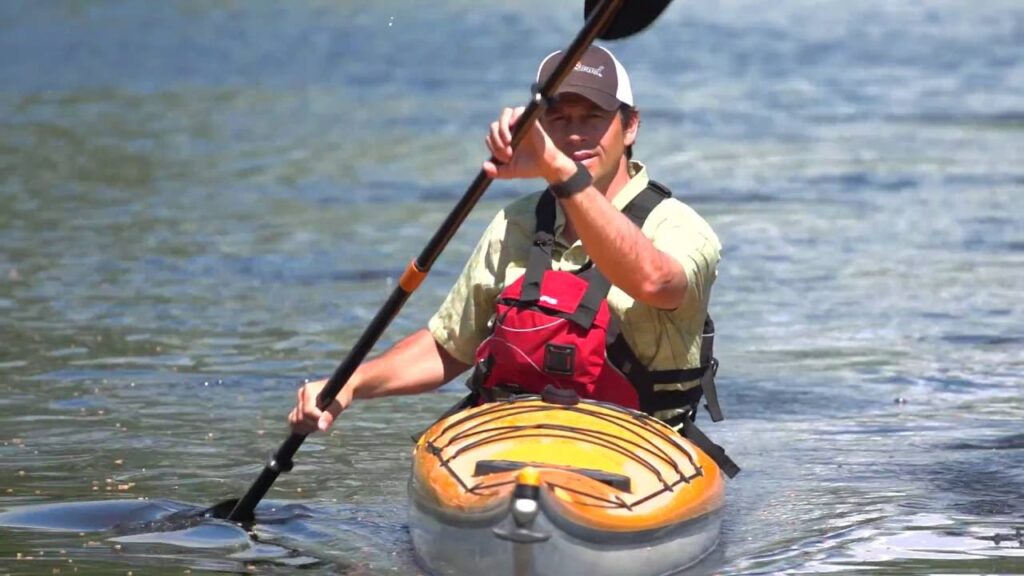
Remember: kayaking is about smooth, flowing movements. Using your whole body makes it easier and more fun. Plus, it’s a great workout!
Closing Words
Kayaking is an excellent exercise that offers a full-body workout, enhancing cardiovascular health, muscle strength, and endurance.
It’s a fun, low-impact activity suitable for various fitness levels, effectively aiding in weight loss and improving overall physical shape, including reducing back fat. Kayaking combines fitness with the joy of being outdoors.
FAQs
Yes, kayaking burns calories and builds muscle, making it an effective activity for weight loss when combined with a healthy diet.
Kayaking for at least 1 hour is a good workout, providing cardiovascular, strength, and endurance benefits.
Yes, kayaking can get you in shape by improving cardiovascular health, building muscle strength, and enhancing overall fitness.
Two hours of kayaking can burn approximately 800-1000 calories, depending on intensity and individual factors.
Kayaking can help reduce back fat by toning the muscles in the back and improving overall body composition.

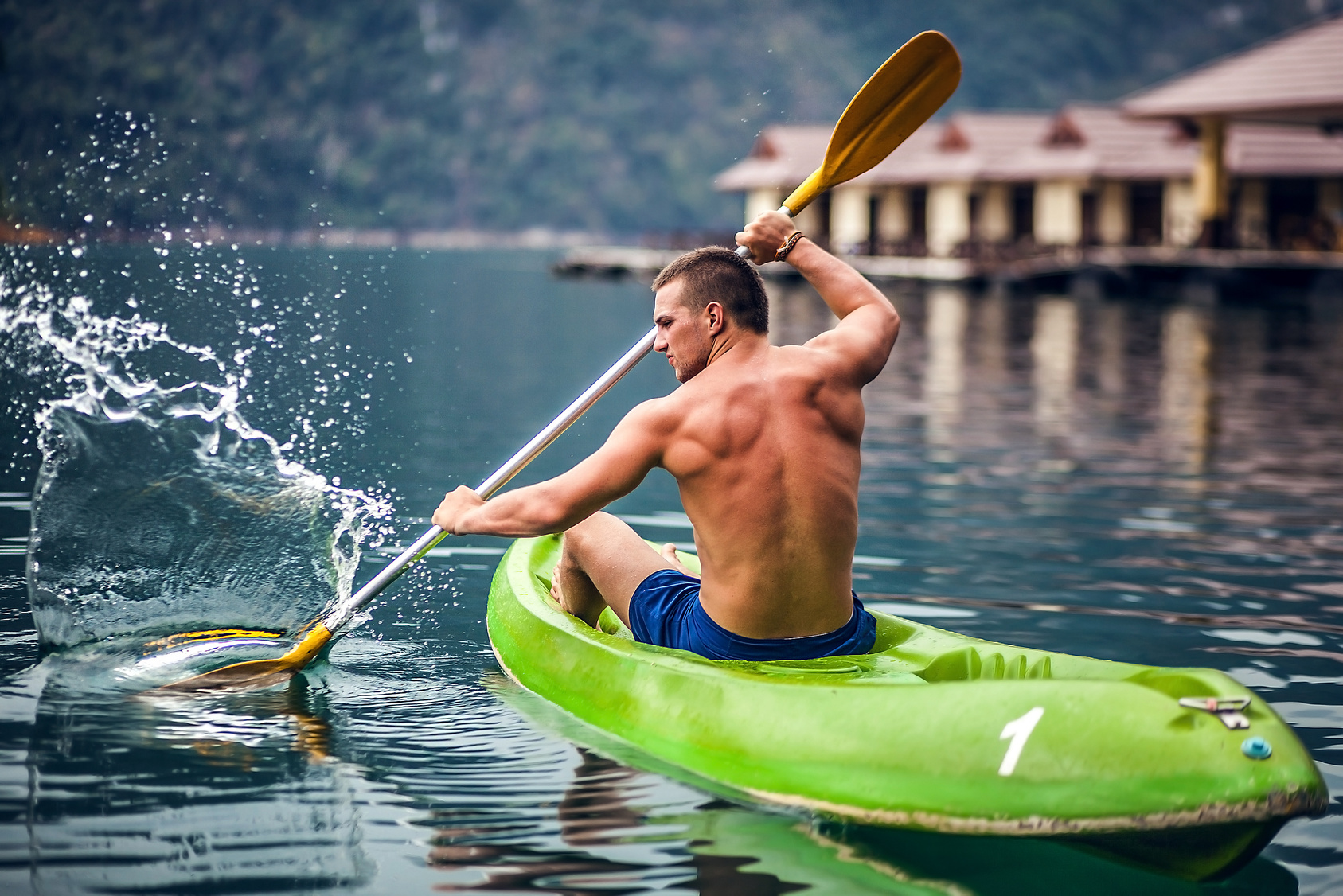
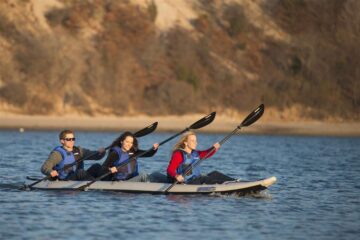
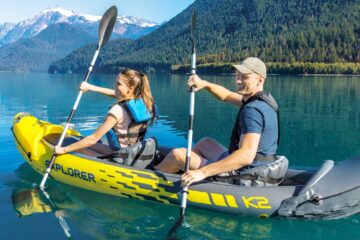
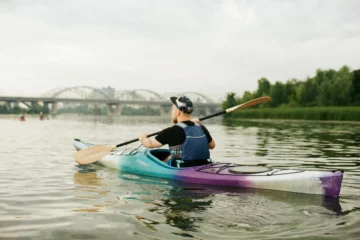
[…] Balance and Coordination: Kayaking enhances core stability, which is beneficial during […]
[…] a kayak is hard work. It can hurt your back. A kayak cart takes away that risk. It does the heavy lifting for […]
[…] Workout: Kayaking is an excellent way to improve strength and cardiovascular […]